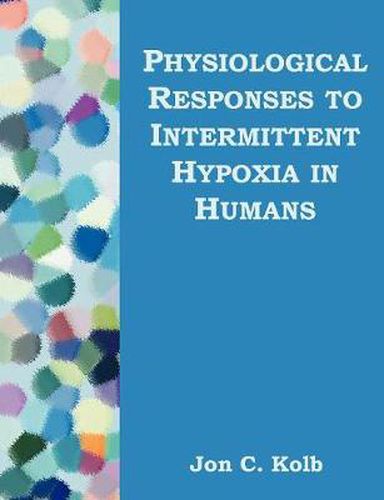Readings Newsletter
Become a Readings Member to make your shopping experience even easier.
Sign in or sign up for free!
You’re not far away from qualifying for FREE standard shipping within Australia
You’ve qualified for FREE standard shipping within Australia
The cart is loading…






This title is printed to order. This book may have been self-published. If so, we cannot guarantee the quality of the content. In the main most books will have gone through the editing process however some may not. We therefore suggest that you be aware of this before ordering this book. If in doubt check either the author or publisher’s details as we are unable to accept any returns unless they are faulty. Please contact us if you have any questions.
Recently, endurance athletes and high altitude climbers have gained access to commercially available, portable normobaric hypoxic chambers. Intermittent exposures to hypoxia in these chambers may elicit adaptations similar to those observed during acclimatization to altitude. Manufactures of these systems purport that intermittent exposures may elicit adaptations similar to those observed in response to the hypoxia of high altitude, however there have been no reports in the scientific literature that ventilatory acclimatization or alterations in cerebrovascular dynamics occur following repeated episodes in the portable chambers. The main conclusions are that an intermittent normobaric hypoxic intervention, consisting of five consecutive overnight exposures to a simulated altitude of 4300m, elicits perturbations in the acute cerebrovascular and ventilatory responses to both hypoxia and hypercapnia, which are similar to changes following chronic altitude exposure. Individual variability to intermittent hypoxia may have an impact on the rate at which the process of acclimatization proceeds. The extent of physiological and symptomatic responses to intermittent hypoxia are likely to be associated with the severity of hypoxia as well as the length and number of recurrent episodes of hypoxia.
$9.00 standard shipping within Australia
FREE standard shipping within Australia for orders over $100.00
Express & International shipping calculated at checkout
This title is printed to order. This book may have been self-published. If so, we cannot guarantee the quality of the content. In the main most books will have gone through the editing process however some may not. We therefore suggest that you be aware of this before ordering this book. If in doubt check either the author or publisher’s details as we are unable to accept any returns unless they are faulty. Please contact us if you have any questions.
Recently, endurance athletes and high altitude climbers have gained access to commercially available, portable normobaric hypoxic chambers. Intermittent exposures to hypoxia in these chambers may elicit adaptations similar to those observed during acclimatization to altitude. Manufactures of these systems purport that intermittent exposures may elicit adaptations similar to those observed in response to the hypoxia of high altitude, however there have been no reports in the scientific literature that ventilatory acclimatization or alterations in cerebrovascular dynamics occur following repeated episodes in the portable chambers. The main conclusions are that an intermittent normobaric hypoxic intervention, consisting of five consecutive overnight exposures to a simulated altitude of 4300m, elicits perturbations in the acute cerebrovascular and ventilatory responses to both hypoxia and hypercapnia, which are similar to changes following chronic altitude exposure. Individual variability to intermittent hypoxia may have an impact on the rate at which the process of acclimatization proceeds. The extent of physiological and symptomatic responses to intermittent hypoxia are likely to be associated with the severity of hypoxia as well as the length and number of recurrent episodes of hypoxia.